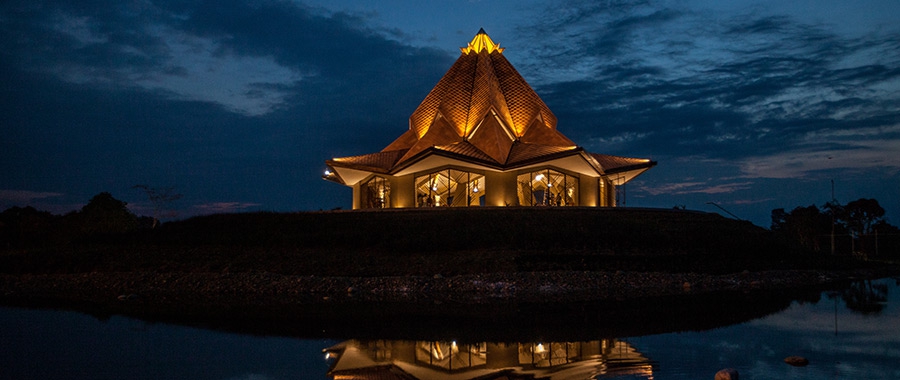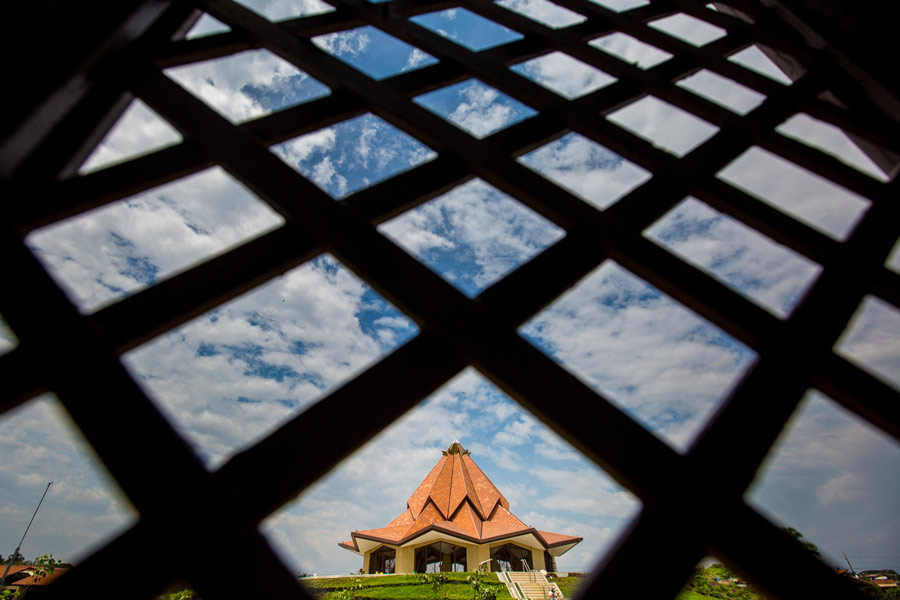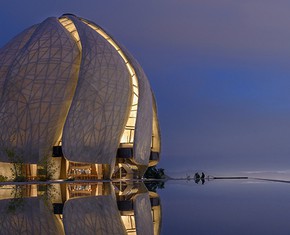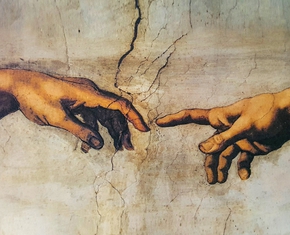The views expressed in our content reflect individual perspectives and do not represent the authoritative views of the Baha'i Faith.
Baha’i Houses of Worship aren’t only places to meditate and pray—they’re intended to become spiritual centers for community life.
In fact, Baha’is regard their Houses of Worship as “… one of the most vital institutions in the world.” – Abdu’l-Baha, Selections from the Writings of Abdu’l-Baha, p. 99. They not only offer a place for people of all faiths and backgrounds to come together to pray and reflect on spiritual realities, but Baha’i Houses of Worship also play a central role in other aspects of physical life and material progress.
Every House of Worship represents a strong relationship between the spiritual and practical elements that embody its purpose. As much as the House of Worship is built to be the central and spiritual heart of the community, the outward expressions of the heart are its various dependencies, the social service institutions that surround it and exemplify its true purpose of service to humanity:
… institutions of social service as shall afford relief to the suffering, sustenance to the poor, shelter to the wayfarer, solace to the bereaved, and education to the ignorant. – Shoghi Effendi, Baha’i Administration, p. 184.
The establishment of these public institutions—meant to benefit all people, not just the Baha’is—provides a potent and integral foundation for the construction of Baha’u’llah’s unifying vision for humanity:
These dependencies—centres of education and scientific learning as well as cultural and humanitarian endeavour—embody the ideals of social and spiritual progress to be achieved through the application of knowledge, and demonstrate how, when religion and science are in harmony, they elevate the station of the human being and lead to the flourishing of civilization. – The Universal House of Justice, Message to the Baha’i’s in Iran, December 18, 2014
In some cases, the process of dependencies begins long before the construction of the House of Worship. In other cases they occur long after the initial construction of the Temple itself is complete. The first stirrings of the bond between a Baha’i House of Worship and its dependencies can be found in the pioneering efforts of Baha’is in Ishqabad, Turkmenistan, where the first Baha’i House of Worship was established in 1902:
On a befitting tract of land in the centre of the city that had been obtained some years before with the consent of [Baha’u’llah] Himself, facilities were built for communal well-being—a meeting hall, schools for children, a hostel for visitors, and a small clinic, among others. A sign of the notable achievements of the Baha’is in Ishqabad, who in those productive years became distinguished for their prosperity, magnanimity, and intellectual and cultural attainments, was their attention to ensuring that all Baha’i children and youth were literate in a society with rampant illiteracy, especially among girls …. For over twenty years, the friends experienced the heavenly joy of having realized their lofty aim: the establishment of a focal point of worship, a nerve centre of community life, a place where souls gathered at daybreak for humble invocation and communion before flowing out of its doors to engage in their daily pursuits. – The Universal House of Justice, Letter to the Baha’i’s of the World, August 1, 2014.
On my trip to Norte Del Cauca, Colombia, in late 2016, I learned first-hand how such dependencies evolve, tending to the needs and realities of the community, utilizing the gifts, trades and talents of those who reside in nearby towns and villages. Upon my arrival in the town of Puerto Tejada where the House of Worship was to be constructed (it has since been completed), I’d already visited a Baha’i-inspired school named the Ruhi Institute, had learned of a Baha’i-inspired University nearby where teachers were being trained, and the beginnings of a community center where community members could gather to discuss local affairs. This was all before I visited the property where the House of Worship was to be constructed.
Upon my arrival at the temple site, I met a lovely man named Gilberto, who drove me around the property to show me all the native plants, shrubs and trees that had been planted by community members in the months and years prior. He proceeded to show me where the greenhouses would be built, where the coffee and banana plantations would soon start to grow, and the places set aside for visitors to gather. My understanding was that the purpose of the plantations was to contribute to local industry and economy in a sustainable way. The greenhouses were intended to offer local residents and farmers the opportunity to cultivate more plants native to the region, for the purpose of distribution to the community.
Gilberto shared how over the last 70 years large sugar cane companies had come to his community, insisted that they grow their sugar on the land of local farmers who they would then employ. The sugar cane, a non-native plant to the region, devastated the nutrients in the soil over the course of multiple generations. It killed all the native vegetation, which meant that native animals no longer returned. The Baha’i community had partnered with local researchers and universities to identify native plants of the region, and with the community’s help, they planted over 2000 native plants around the temple site.
By the time I’d visited it had been a couple of years since the native plants had been carefully distributed and planted around the temple site. Gilberto shared with much delight that they had already seen native animals, birds, and fish return to the region. The future of these greenhouses on the temple site was to continue cultivating more native plants for distribution around the temple and also the local community. This also offered an opportunity for students, families and farmers in the area to be empowered and begin contributing to their local environment and economy in a sustainably conscious way.
Toward the end of my tour of the temple site, Gilberto took me to a large old tree that had benches surrounding it. We said some prayers, shared reflections on how such a space would impact his community, and I learned about how the plans were progressing for music inside the House of Worship, a personal interest of mine.
On that day, Gilberto showed me the power of these dependencies, the spirit they evoke and the capacities they build, in preparation for the House of Worship. These dependencies engaged and empowered multiple generations to contribute to various aspects of community building. They took many different forms, but were relevant and tended to the needs of the community in which this House of Worship was to be raised. I was touched to learn about the years of labor, brought about by the sacrifice and dedication of countless individuals who were preparing the community, through various means of agriculture, development, and education, in for the construction of this lofty edifice:
Particularly in the nations and localities recently designated for the construction of a House of Worship, we have witnessed the friends’ spontaneous expressions of joy; their immediate and heartfelt commitment to lend their share in carrying out the critical work at hand and to increase the dynamism of those activities integral to the emergence of a [Baha’i House of Worship] within a population; their sacrificial contributions of time, energy, and material resources, in a variety of forms; and their sustained efforts to awaken growing contingents to the vision of those edifices dedicated wholly to the remembrance of God that will be founded in their midst. – Ibid.
Baha’is build Houses of Worship not for themselves, but for the world. Baha’u’llah said:
Build ye houses of worship throughout the lands in the name of Him Who is the Lord of all religions. – Baha’u’llah, Most Holy Book, p. 29.

















Comments
Sign in or create an account
Continue with Googleor